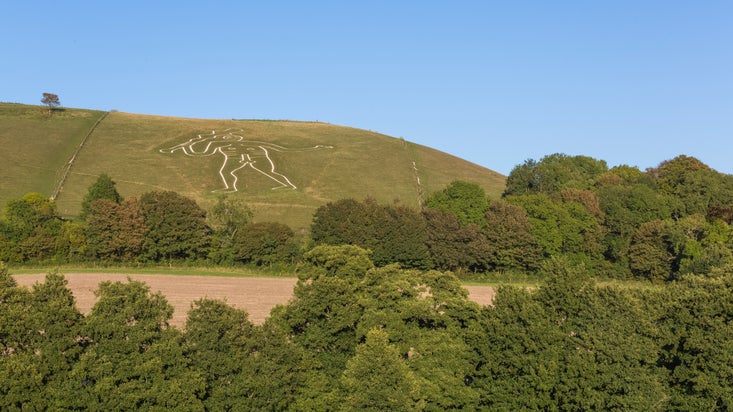
Discover more in Dorset
Home to everything from an island, ancient coasts and hidden gems to a castle and a house inspired by an Italian palace.

How many people does it take to look after Britain’s largest chalk giant? What keeps our teams busy throughout the year to keep him in tip-top condition? And how much chalk do you need to keep him visible for miles around? Find out about our work looking after the Cerne Giant, now over 100 years in our care.
The chalk grassland where the Giant lies is of national and European importance for the many rare chalk downland plants and invertebrates that thrive here. Keeping the grass short enough so that the Giant can be seen, in tandem with maintaining a flower-rich chalk downland can be a tricky balance to find.

It takes a team of National Trust staff, volunteers and a herd of sheep to keep the Cerne Abbas Giant in tip-top condition. We’ve put together some facts on what keeps them busy throughout the year:
Every 10 years or so, 17 tonnes of chalk are packed into the 460 metre outline of the Giant. This work keeps the edges sharp, removes any weeds, prevents discolouration and keeps the Giant visible for miles around. During the Second World War the Giant was covered to prevent him being used as a landmark. Since then he has been visible again, and the white lines are re-chalked each decade - a process that takes days of work by National Trust staff and volunteers.
Standing at 180ft tall, re-chalking Britain’s largest chalk Giant is challenging in many ways, not only due to his size but because of the sheer steepness of the slope he’s on. The first job is to dig out all the old chalk before hammering in 17 tonnes of new chalk by hand.

It’s important to pack the chalk as tightly as possible, to save it from being washed away by rainwater. Once the chalk is as packed in as it can be, the Giant will then be left alone, and tampered with as little as possible. We're constantly reviewing how best to look after the giant so that he can be enjoyed by visitors for many years to come. The impacts of climate change, should we experience more frequent and severe rains, may mean it requires more frequent chalking.
The dating of the Giant was only possible because the National Trust has preserved and maintained the figure, which otherwise might have been lost to history.

Home to everything from an island, ancient coasts and hidden gems to a castle and a house inspired by an Italian palace.
Ancient naked figure sculpted into the chalk hillside above Cerne Abbas
